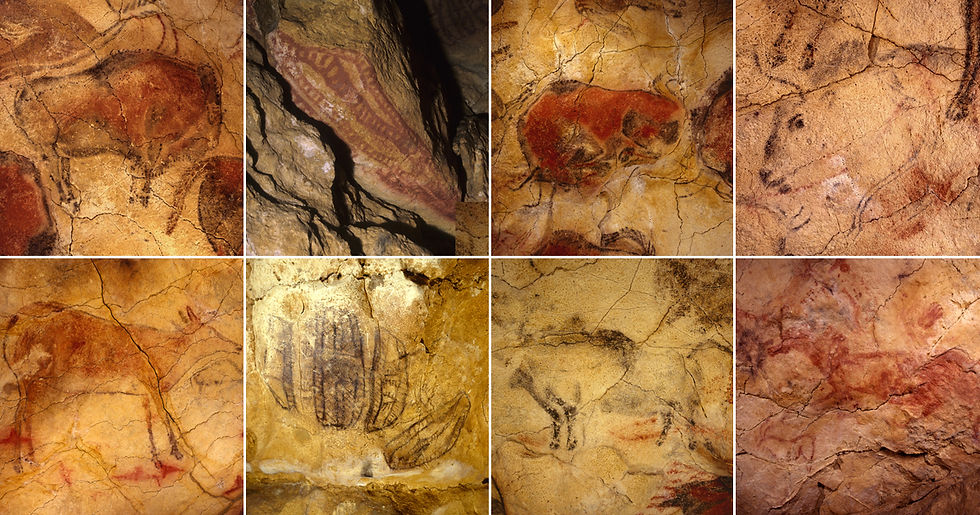Altamira
- Anish Joseph

- May 30, 2024
- 3 min read

A Window into Prehistoric Art and Human Evolution
Altamira's Etymology and Significance: The word "Altamira" translates to "high view" in Spanish, reflecting its geographical prominence. The cave of Altamira, located near Santillana del Mar in Cantabria, Spain, is renowned for its magnificent prehistoric cave paintings. These artworks provide a glimpse into the cognitive and artistic abilities of early humans during the Upper Paleolithic era.
Discovery and Historical Context: The cave was discovered by a local hunter in 1868, but its significance was brought to light in 1879 when Marcelino Sanz de Sautuola, an amateur archaeologist, explored it with his daughter María. María was the first to notice the vivid paintings on the ceiling. Sautuola's subsequent research, published in 1880, initially garnered acclaim but soon faced intense skepticism and accusations of forgery due to the advanced artistic techniques displayed in the paintings. It wasn't until 1902, after similar discoveries in the Franco-Cantabrian region, that the authenticity of the Altamira paintings was universally accepted.
Proximity to Darwin's Theory of Evolution: The discovery of Altamira came just two decades after Charles Darwin's groundbreaking publication, "On the Origin of Species" (1859). This period marked a burgeoning interest in human prehistory and evolution, making the Altamira findings particularly significant as they provided tangible evidence of early human cognitive and artistic capabilities.
Cave Paintings and the Upper Paleolithic Era: The paintings at Altamira date back to the Upper Paleolithic period, specifically the Solutrean (c. 20,000 years ago) and Magdalenian (c. 16,500-14,000 years ago) eras. These artworks include depictions of bison, horses, and deer, created using charcoal, ochre, and hematite. The artists cleverly utilized the natural contours of the cave walls to impart a three-dimensional effect to the figures, a technique demonstrating sophisticated artistic sensibility and understanding of perspective.
The Cognitive Revolution and the "Superbrain": Paleoanthropologists refer to the period of rapid cognitive development during the Upper Paleolithic as the "Cognitive Revolution." This era saw the emergence of symbolic thought, art, and advanced tool use. The concept of the "superbrain" encapsulates humanity's unique ability to transfer ideas and meaning across vast distances and generations, a capacity vividly illustrated by the enduring legacy of the Altamira cave paintings.
Diverse Interpretations of the Cave Paintings: Interpretations of the Altamira paintings vary widely. Some scholars suggest they served religious or ritualistic purposes, possibly related to hunting magic intended to ensure successful hunts. Others propose they were a means of social communication or storytelling. The presence of abstract shapes and handprints alongside animal figures points to a complex symbolic language, the full meaning of which remains elusive to modern scholars.
Implications for Humanity: The Altamira cave paintings stand as a testament to the ingenuity and creativity of early humans. They bridge the gap between our prehistoric ancestors and contemporary society, illustrating that the drive to create and communicate is deeply rooted in our species. While the precise meanings of these artworks are lost to us, they inspire a profound appreciation for the continuity of human expression across millennia.
In an abstract sense, the Altamira paintings underscore the relationship between form and meaning, reminding us that the essence of human creativity transcends time. They invite us to reflect on our shared heritage and the enduring power of art to convey complex ideas and emotions, connecting us to the distant past and to each other.
For more detailed information, you can visit sources such as the World History Encyclopedia and Britannica.



Comments